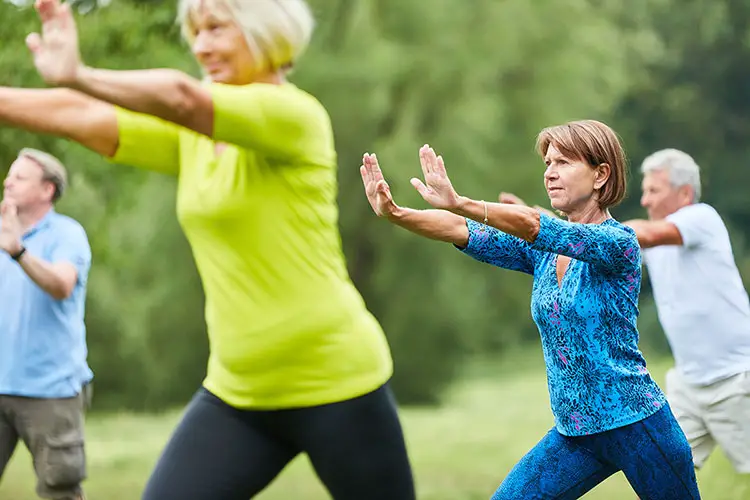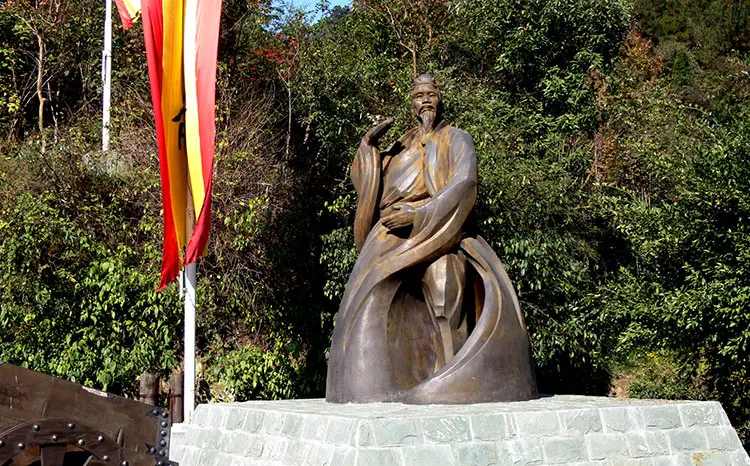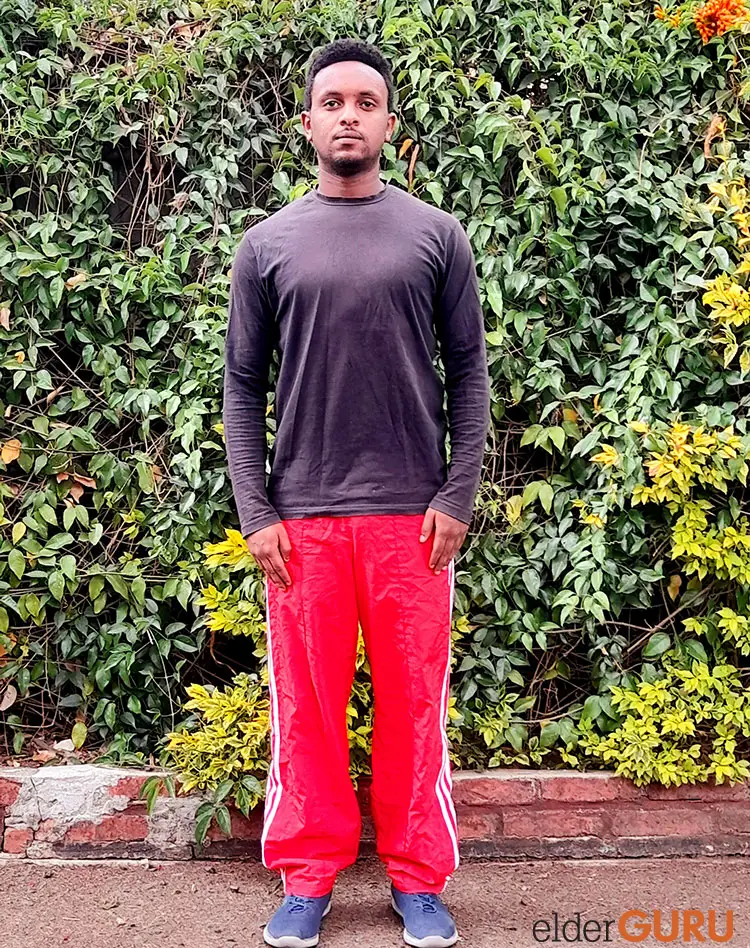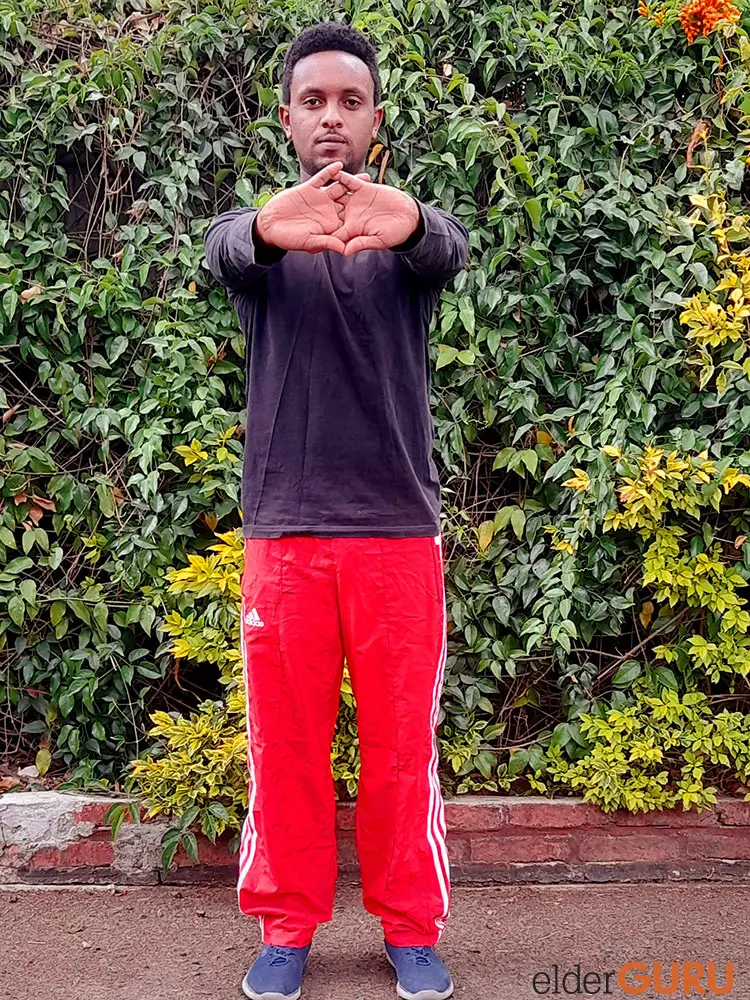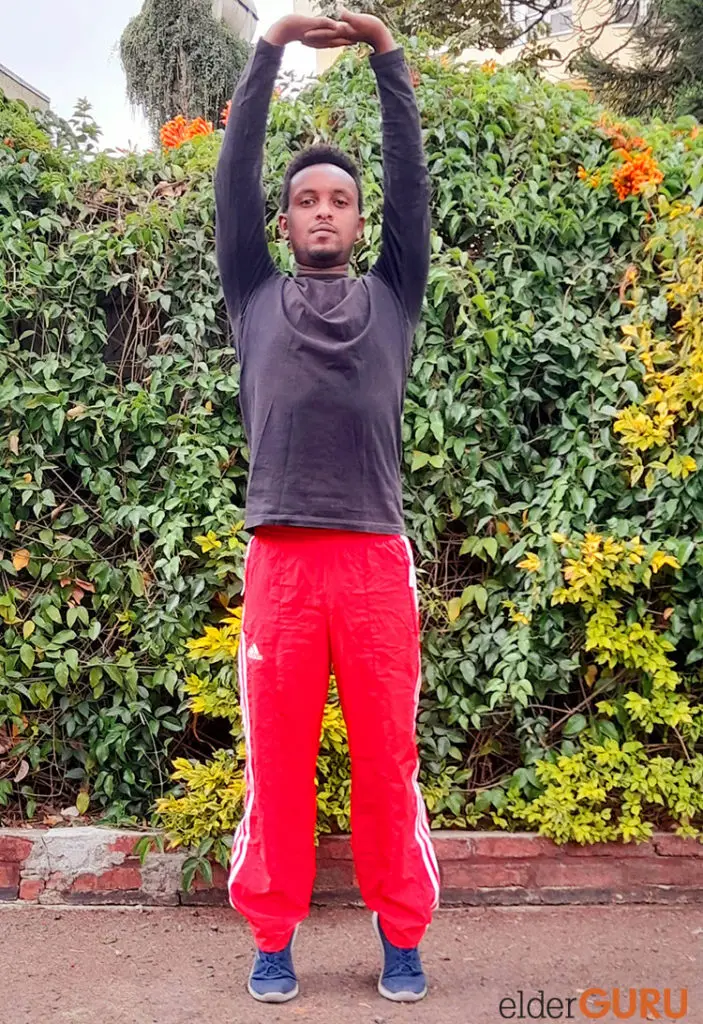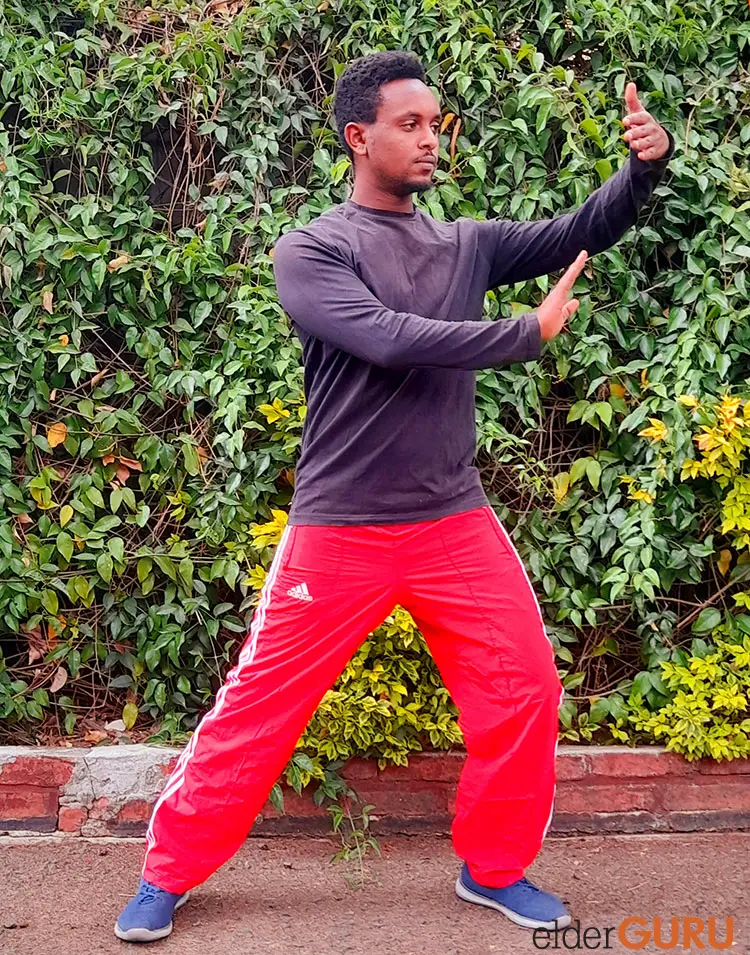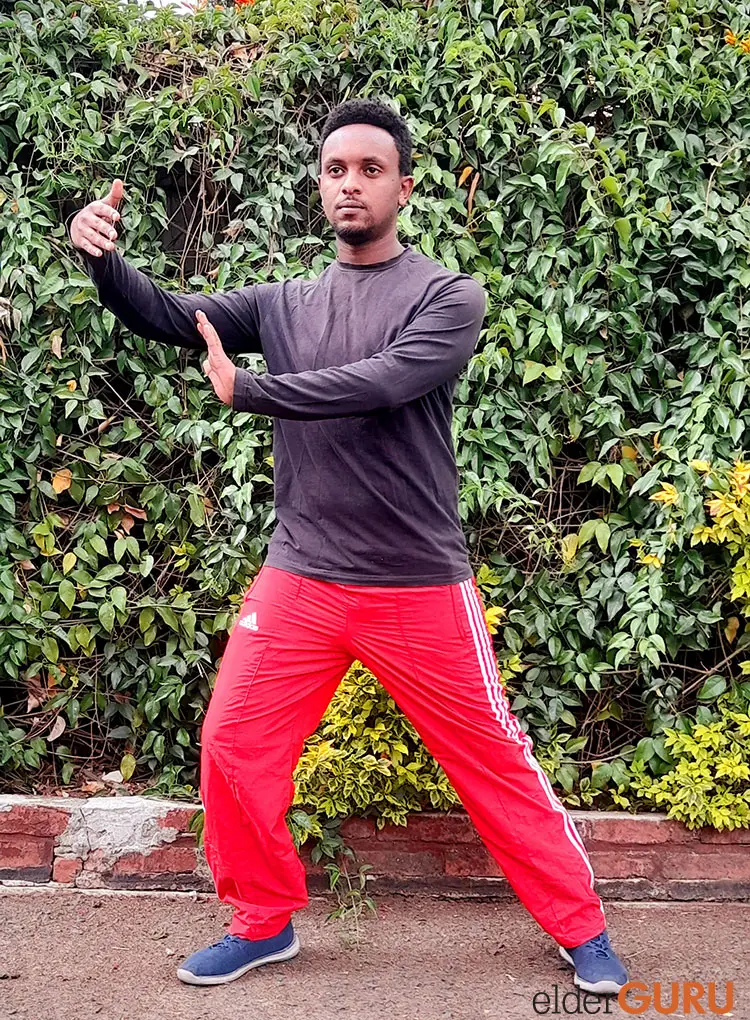It is important for all of us to stay active, for physical and mental health. As we grow older, this becomes even more important. One method many have found is through Tai chi. In this article we will look at what it takes to get started with Tai chi for seniors.
What is Tai Chi?
Tai chi, also known as tai chi chuan, is an ancient Chinese art that involves a series of movements performed in a slow, continuous and flowing manner accompanied by deep breathing. It has also been known as “moving meditation,” which requires focus of the mind and body synchronized with slow, controlled movements.
This low-impact exercise, practiced with relaxed muscles, improves natural posture alignment, balance and inner peace. Tai chi is practiced by all age groups either for health or as a martial art to help embrace the mind, body and spirit. Tai chi is also a great supplement to Cane-Fu martial arts, a style of self-defense becoming more popular among seniors.
Tai chi is an art with great depth of knowledge and skill that requires a great deal of time to master. Many even consider it a way of life that becomes a lifetime journey. However, with some attentiveness and dedication it can easily be learned to attain its health benefits.
A Brief History
Tai chi was created around the 12th century in China by Zhang Sanfeng, a spiritual man who lived most of his life in the forests as a wonderer. Zhang Sanfeng is considered “the father of tai chi” as he was the first to observe how things in nature move and figured out how and why they move.
Zhang was born in 1247 near Longhushan Mountain and was given to the Shaolin Temple as a young boy to study martial arts. But as the years went by he felt like he was more interested in Taoism than Buddhism. It was due to this interest that he decided to leave the temple at the age of 20 and started living as a wanderer.
As a wanderer, Zhang lived a very modest and lonely life. He rarely spoke and spent most of his day time in forest and rarely went to the village. He would visit temples to spend the night but disappeared every morning to continue exploring. One morning, when he was wandering around the forest, he heard a strange noise and decided to investigate where this sound was coming from.
He then discovered a snake and magpie in a bitter fight. He kept quiet as he watched this fight take place. The snake and magpie were switching from fast to slow movement to defend themselves. The snake was moving flexibly and with such accuracy, avoiding the bites and scratches of the magpie while the magpie was switching from attack technique to slow withdrawal technique when the snake was trying to strike. Zhang was so inspired by how they were able to balance their bodies and switch from slow movements to lightning fast strikes. The two movements seemed contradictory but simultaneously complementary, much like yin yang.
These mesmerizing fight techniques became his inspiration for creating a new form of martial arts, Tai chi. He began to practice balancing energy while cultivating it. At the beginning he kept his newfound martial art to himself and practiced in secret. He went on early mornings walks to the forests to practice in isolation and improved the movements day by day. He worked on his breathing, attaining peace of mind, the flow of his slow movements, the relaxation of his body, and the coordination of his movements.
Zhang was learning how to gently move his body by pacing himself to the flow, keeping his body in constant motion without any pauses. One day, as legend has it, some robbers tried to attack him in a forest and he saw this as an opportunity to put his newfound martial art to the test. This would be the first time he had used Tai chi in an actual fight. By keeping a calm attitude and sticking to his art form he moved flawlessly and was able to elude the robbers’ strikes on each turn.
When they became too tired to fight, he was able to attack them with full power and defeat them all. It was after this incident that he realized Tai chi could be helpful for everybody and decided to teach it to other monks in the Wudang Mountains.
The 5 Styles of Tai Chi
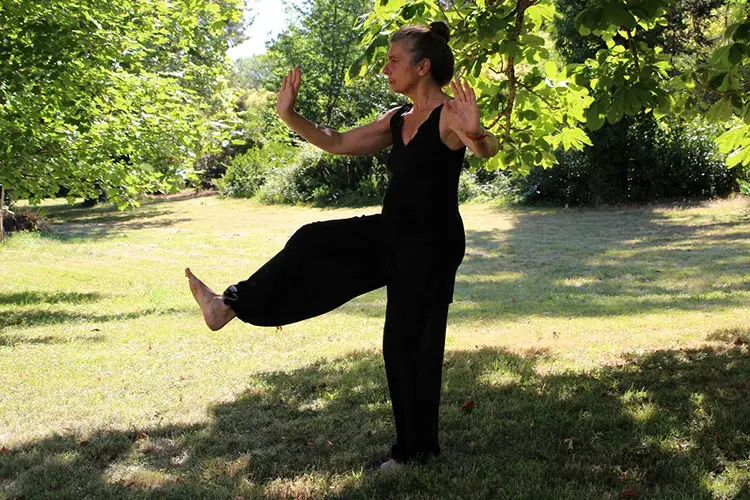
A sequence of specific movements make up the art of Tai chi, with each series of movements called a form. Tai chi can be divided into five main styles: The “Chen” style, the “Yang”, the “Wu” style, the “Sun,” and the “Hao” style. Although all the styles have the same origin and share countless similarities, they all have their own unique characteristics and tend to emphasize a particular aspect of movement.
So, whether you want to take up Tai chi as a new interest or you are a current practitioner of one of the five styles, it is useful to look into what makes each style distinct. There are many health benefits to Tai chi, and each of these styles would be suitable for exercising one’s mind and body. With that said let’s start to explore the different styles of Tai chi.
1. Chen Style
The Chen style of Tai chi martial arts first appeared in the 16th century in the Henan province of China. It is the oldest form out of the five primary Tai chi styles and was used as a reference to derive the other styles. The Chen family was practicing their own unique form of martial arts characterized by explosive movements including jumps, kicks, and strikes.
Powerful stances develop strength and agility. They alternated between slow, graceful movements and quick, forceful ones. This style of Tai chi provides a good cardio workout, and rebuilds body systems and balance. Young practitioners and martial artists will benefit from the low-level; middle-aged people in good physical health will benefit from the medium-level; and seniors and those with back or knee injuries will benefit from the high-level.
2. Yang Style
The founder of this style was Yang Lu-ch’an. He developed it directly from the Chen style of tai chi in 1850. After capturing the attention of the Chinese Imperial family, he was hired to teach his modified version of less athletic adaptation of the Chen style of tai chi to their elite palace guards. The Yang family style of Tai chi increases flexibility by using large, exaggerated movements that are performed slowly and gracefully to expand and contract the body.
3. Wu Style
The Wu style was founded by a military officer cadet, Wu Ch’uan-yu. This officer received his training from Yang Lu-ch’an, the founder of the Yang style and the Chinese Imperial Guards’ martial arts teacher.
Wu-style Tai chi differs from other types of Tai chi in that it emphasizes body extension by forward and backward leaning rather than staying oriented. It also uses a medium stance, and its movements are smaller and more compact than those used in Yang style.
4. Sun Style
The founder of the Sun style of Tai chi, Sun Lutang, was an expert in xingyiquan and baguazhang-two other internal martial arts like Tai chi. Both art forms are similar to tai chi as they emphasize the use of the mind in moving the body.
Sun Lutang created this Tai chi style that incorporates elements of different martial arts and Tai chi styles. It emphasizes mobility by combining bagua (baguazhang) stepping and hsing-I (xingyiquan) leg and waist methods with Tai chi’s relaxed body movements. Unique footwork and gentle, flowing, circular hand motions are used in Sun-style Tai chi. Sun-style tai chi resembles a graceful dance with its fast, flowing motions and quick moves. It is a great style of Tai chi for seniors.
5. Hao Style
Out of the five styles, the Hao tai chi style is the least popular. The main emphasis of this style is the internal qi. Practitioners learn to concentrate internally and make major internal movements in order to cause subtle outer movements. Externally, the movements may look quite similar.
Hao tai chi is a more advanced form of the art. This style is not recommended for beginners because it focuses heavily on regulating the movement of qi (internal force).
Choosing the Correct Tai Chi Style for You
Tai chi is good for your overall wellbeing because it decreases unhealthy tension, enhances posture and equilibrium, and strengthens essential internal energy. There are numerous health benefits associated with practicing Tai chi regardless of whether you choose to practice Chen, Yang, Wu, Sun or Hao style Tai chi. Things to consider when looking for the right style of Tai chi are your goals and physical abilities.
- If you are a beginner or a senior citizen over the age of 55, the Chen style would be your ideal choice as it is easy to adopt.
- If you are recovering from an injury, Qi gong & Chen style high-level are best suited for you as the upright posture and easily adapted stances will put the least amount of stress on muscles and joints. The healing process will be supported by gradual, gentle stretching and muscle strengthening.
7 Benefits of Tai Chi for Seniors
Tai chi provides real and ample benefits for all who practice this Chinese martial art. You only need a regular commitment of around 20 minutes. The practice focuses on the mental and spiritual dimensions that are combined into a sequence of flowing movements.
The benefits can drastically improve your quality of life, particularly for seniors and those who have had a stroke, heart attack, or other ailment. Let’s take a look at seven of the most important advantages of Tai chi.
1. Reduces Stress
First and foremost, Tai chi is an outstanding stress reliever. The movements are intended to help you calm your body and mind. You just flow, letting go of any worries or stress that might have been troubling you. Both physically and emotionally, the result is a sense of awareness and realignment.
2. Increases Oxygen Flow
Tai Chi practitioners are very conscious of their breathing during the exercise. You’ll be told and reminded to take deep breaths, which will increase oxygen flow. The advantages of having more oxygen flowing into your body are enormous! You will gain energy and alertness. The oxygen would also place the body in the best possible shape to heal itself whether you are suffering from an infection or healing from an injury.
3. Enhances Mental Capacity and Concentration
The combination of increased oxygen and decreased stress improves your mental capacity and ability to focus. Tai chi is a perfect way to keep your mind sharp, even if you just do it a few times a week.
4. Reduces Blood Pressure
Your blood pressure will lower as you relax and deliberately breathe, which is particularly helpful for many seniors. Due to lifestyle modifications such as integrating Tai chi into their workout routine, some people have claimed being able to minimize or completely stop taking blood pressure medications.
5. Alleviates Arthritis Pain
For those who suffer from arthritis, motion may not appear to be a pleasurable practice. The quick, gentle, and fluid movements of Tai chi, on the other hand, are just what the body requires to stay loose and flexible. Tai chi can help to relieve arthritis pain when practiced on a daily basis.
6. Improves Balance
Tai chi can strengthen your posture if you practice it on a regular basis. As you transition between movements, you’ll notice which side has less balance or which poses are especially difficult. You’ll be able to see how you’re doing if you exercise regularly. In everyday life, you’ll benefit from improved balance as you go about your daily tasks.
7. Facilitates Recovery from Strokes or Heart Attacks
Tai chi has also been shown to help stroke and heart attack patients recover more quickly. After a major health incident, oxygen consumption, mental concentration, and balance are all important areas to improve, and Tai chi focuses on all three.
How to Get Started
Assuming I’ve convinced you that Tai chi for seniors is something you should consider, listed below are some pointers to help you get started.
Find an instructor. A good instructor is the fastest and best way get started is the first step on this journey. Go to a class and observe. Talk with the instructor and see if they are a good fit for you.
Following are some basic stances to illustrate what you should expect. Try them.
Start with a neutral stance with your legs at a shoulder width.
Next, interlock your fingers with your palms facing outward and stretch your hands forward. Hold for three seconds then stretch your hands over your head while lifting your heels. Inhale deeply as you do so and hold for another three seconds. This helps improve balance and relax your muscles.
Now spread your legs wider than hip-distance and slightly bend your knees before slowly shifting your weight from left to right. Repeat this motion three times before switching to the other leg.
After you have finished this warm up exercise, do some torso twists. This is done by putting your hands on your hips to help you feel the “twisting movement.”
Now, take deep breaths and feel as your spine extends. Gently twist your torso as you exhale with your knees above your ankles. Your knees should always stay equally bent while you feel these small movements in the core.
Take the “bow stance” position with only your left leg slightly bent as shown in the picture below and start doing a pushing action with your right hand from behind. Retreat to your chest and repeat this a couple of times before switching to the other side.
Tai Chi Resources
While not as good as learning directly from a teacher, you can also learn from books and online classes. This is a great way to begin feeling comfortable with the positions before taking part in a class.
1. Recommended Tai Chi Books
- The Harvard Medical School Guide to Tai Chi – by Peter Wayne
- Tai Chi Illustrated by Pixiang Qui – by Pixiang Qiu
- Tai Chi for Health and Rehabilitation – by Andrew Townsend and Dr. Maurice Olfus
- Tai Chi Classes – by Waysun Laio
2. Online Classes
YouTube is great for many thing, and learning Tai chi is no exception. Here you can see positions and movements and listen to the narration. In front of a television or with a tablet you can follow along in your own home.
Tai Chi 5 Minutes a Day Module 1
Seated Tai Chi Exercises for Seniors
36-Minute Tai Chi Class
3. Tai Chi Apps
If you want to take Tai chi information and movements with you anywhere you go, consider these apps:
Taking a Tai Chi Class
If you are looking to commit and start a Tai chi class near you, talking with your physician is the first step since many hospitals and rehabilitation centers provide classes for free. The other option is to go online and find an instructor that works for you. Look at Yelp for Tai chi classes near you may yield the class you’re looking for.
Summary
Tai chi for seniors involves a slow-paced low intensity exercise that has enormous potential to help senior citizens with age-related physical and mental issues. The practice is both affordable and practical to most people with various existing conditions. Tai chi is recommended for those who want to improve their physical and mental wellbeing. But it is also for those who are curious to try and learn a new way of life.
About the Author: Yeabsira Zeyede has a third-degree Black belt in the Chinese wushu kung fu martial art and specializes in tai chi. This article is based on the knowledge and experience he acquired along the way. Find him on LinkedIn.

